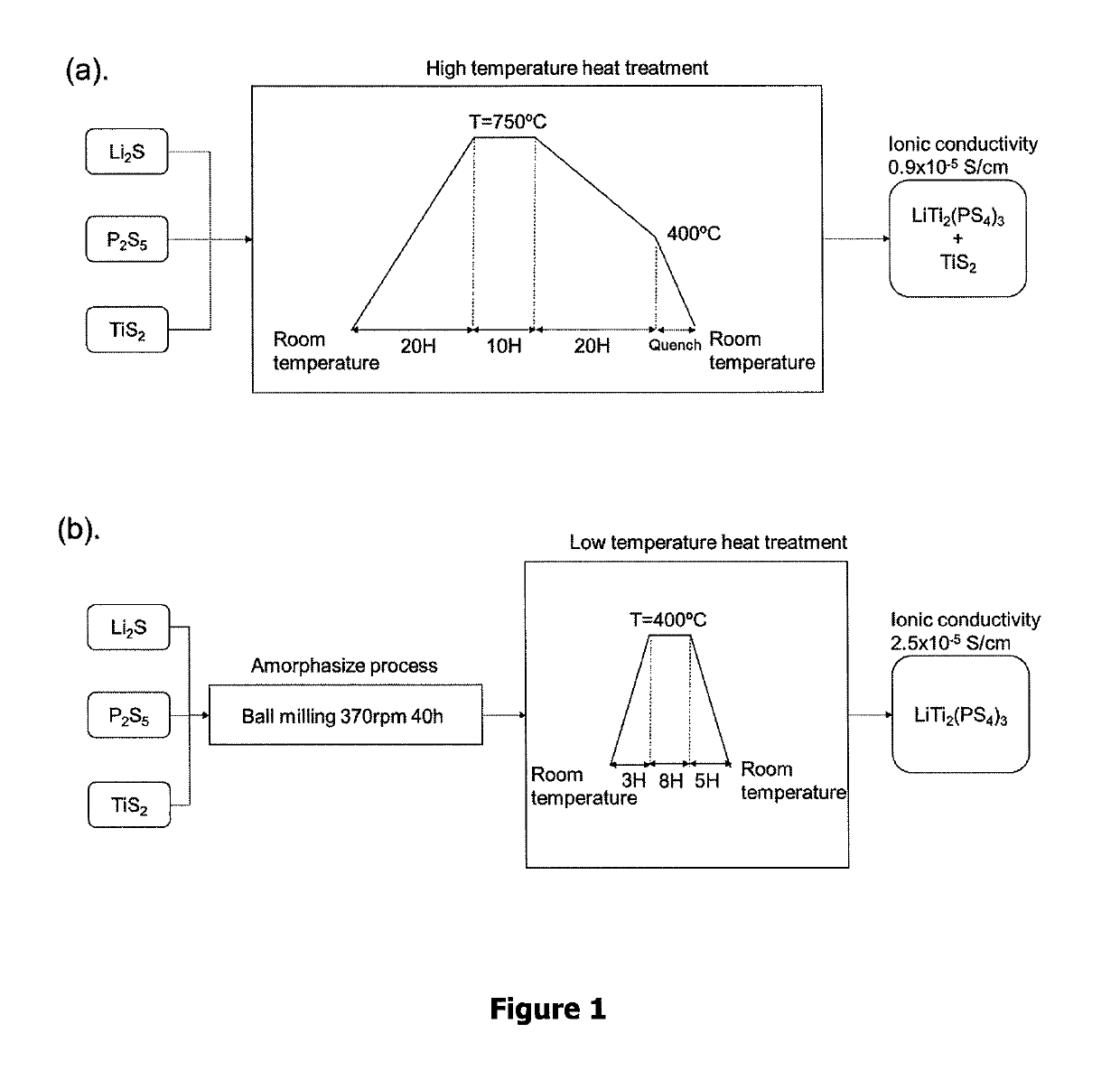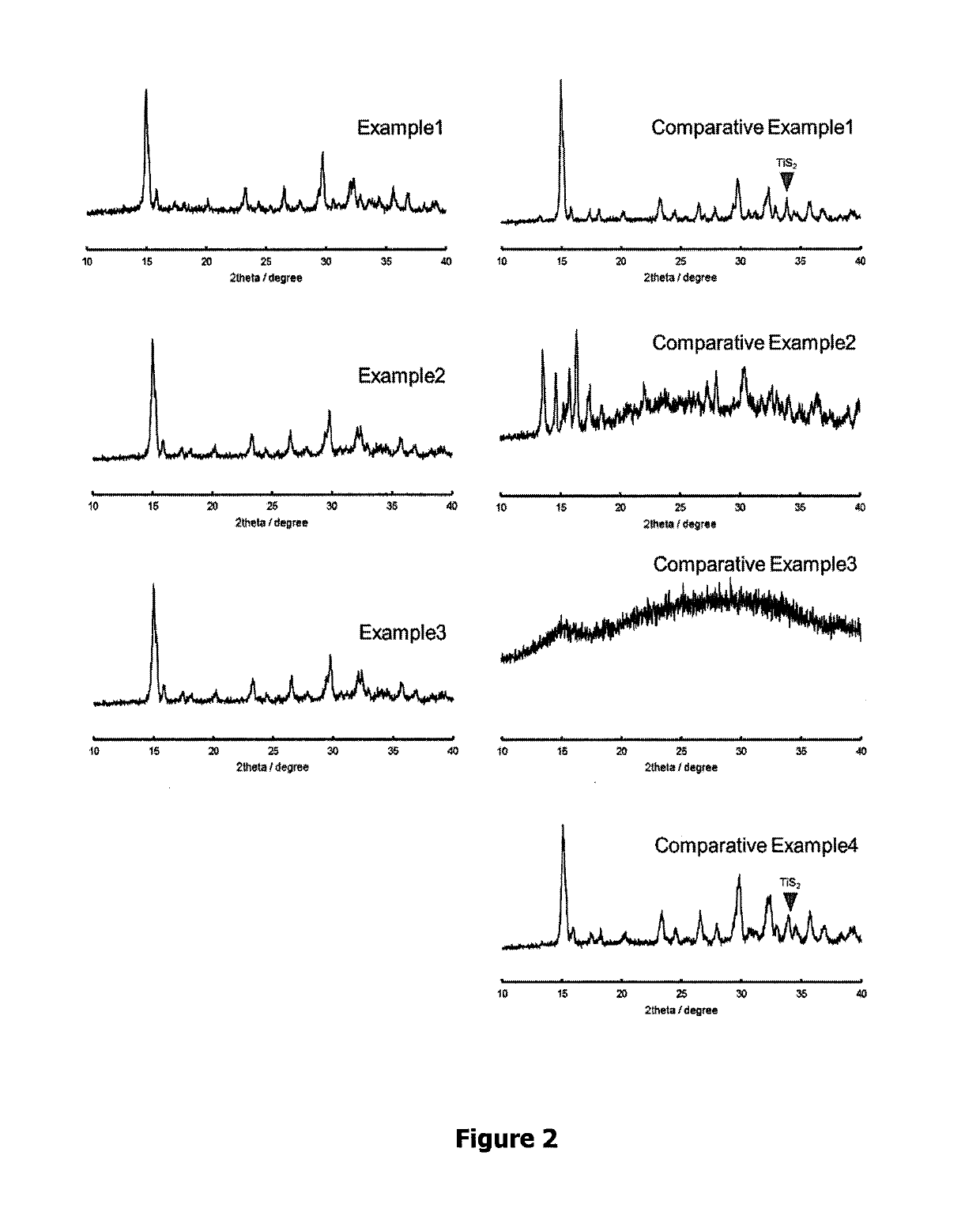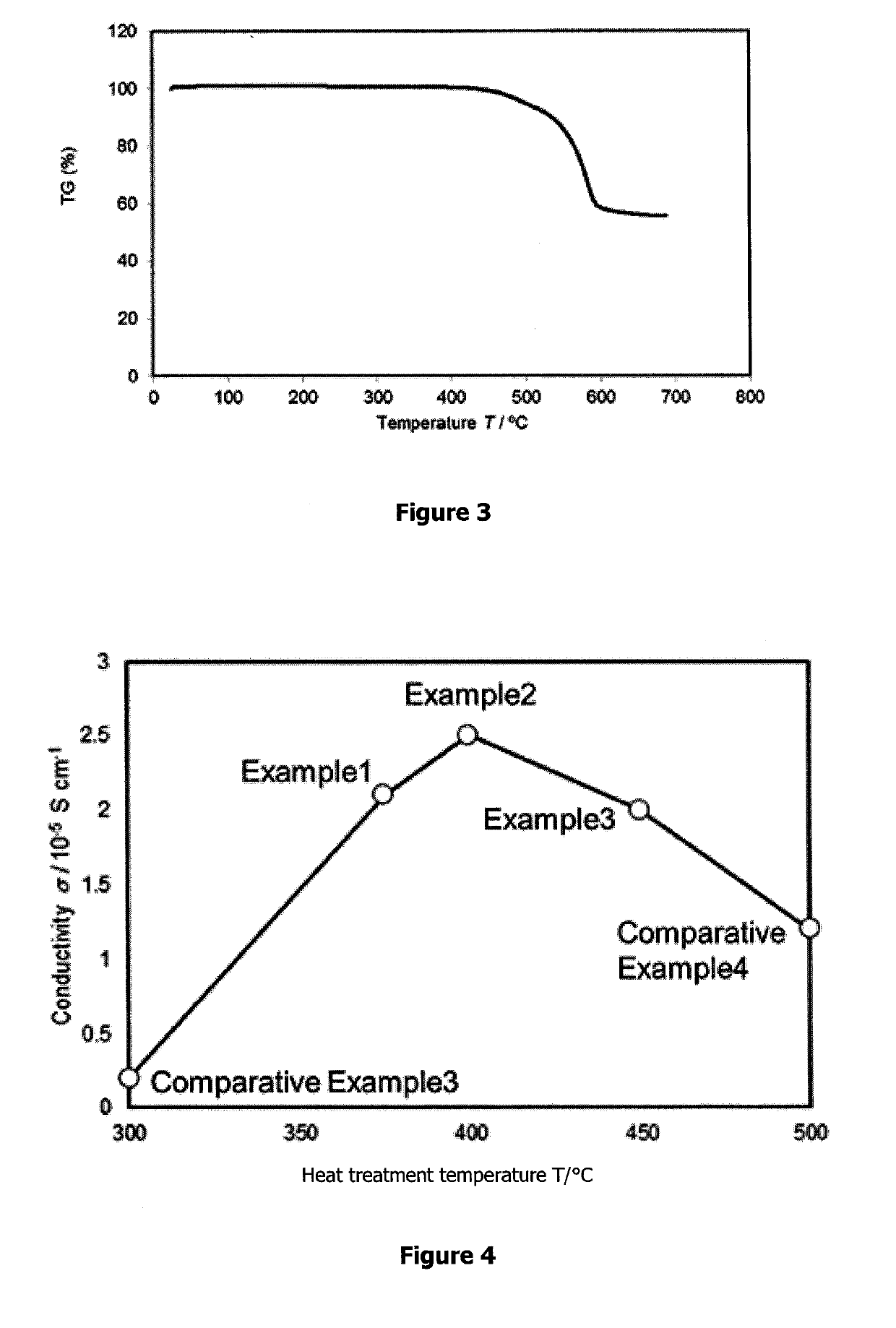METHOD OF SYNTHESIS OF LiTi2(PS4)3
a lithium titanium thiophosphate and lithium titanium thiophosphate technology, applied in the field of synthesis of lithium titanium thiophosphate liti2 (ps4) 3, can solve the problems of not optimizing the synthesis conditions proposed in the literature with respect to the generation of secondary phases and ionic conductivity
- Summary
- Abstract
- Description
- Claims
- Application Information
AI Technical Summary
Benefits of technology
Problems solved by technology
Method used
Image
Examples
example 1
[0045]Synthesis of Solid Electrolytes
[0046]Mixture Step
[0047]The solid electrolyte LiTi2(PS4)3 was synthesized using starting materials Li2S (Sigma), TiS2 (Sigma), and P2S5 (Aldrich). They were mixed at the weight ratio listed in Table 1 below:
TABLE 1Weight ratio of starting materials for LiTi2(PS4)3 synthesisWeight of starting material (g)mmol of starting materialLi2S0.0395840.8615P2S50.574472.5845TiS20.3859463.4460
[0048]Amorphasizing Step
[0049]The mixed sample was put into a zirconium pot (45 mL) with 18 zirconium balls (ϕ 10 mm) under argon. The pot was closed and treated with planetary milling equipment (Fritsch, P7) at 370 rpm for 40 h to obtain the precursor.
[0050]Heat Treatment Step
[0051]The precursor was sealed into a glass tube at a pressure of 30 Pa and then heated at T=375° C. for 8 h. A temperature incline of 2.2° C. min−1 was used to bring the sample up to this heat treatment temperature.
[0052]At the heat treatment temperature of 375° C., the sample was not melted.
[0053...
example 2
[0061]Only the heat treatment temperature was different from Example 1—here the heat treatment temperature was 400° C. and the sample was not melted. The ionic conductivity of the material produced by Example 2 was 2.5×10−5 S / cm. Essentially only the peaks of LiTi2(PS4)3 were detected by XRD.
example 3
[0062]Only the heat treatment temperature was different from Example 1—here the heat treatment temperature was 450° C. and the sample was not melted. The ionic conductivity of the material produced by Example 3 was 2.0×10−5 S / cm. Essentially only the peaks of LiTi2(PS4)3 were detected by XRD.
PUM
| Property | Measurement | Unit |
|---|---|---|
| plateau temperature | aaaaa | aaaaa |
| plateau temperature | aaaaa | aaaaa |
| temperature | aaaaa | aaaaa |
Abstract
Description
Claims
Application Information
 Login to View More
Login to View More - R&D
- Intellectual Property
- Life Sciences
- Materials
- Tech Scout
- Unparalleled Data Quality
- Higher Quality Content
- 60% Fewer Hallucinations
Browse by: Latest US Patents, China's latest patents, Technical Efficacy Thesaurus, Application Domain, Technology Topic, Popular Technical Reports.
© 2025 PatSnap. All rights reserved.Legal|Privacy policy|Modern Slavery Act Transparency Statement|Sitemap|About US| Contact US: help@patsnap.com



